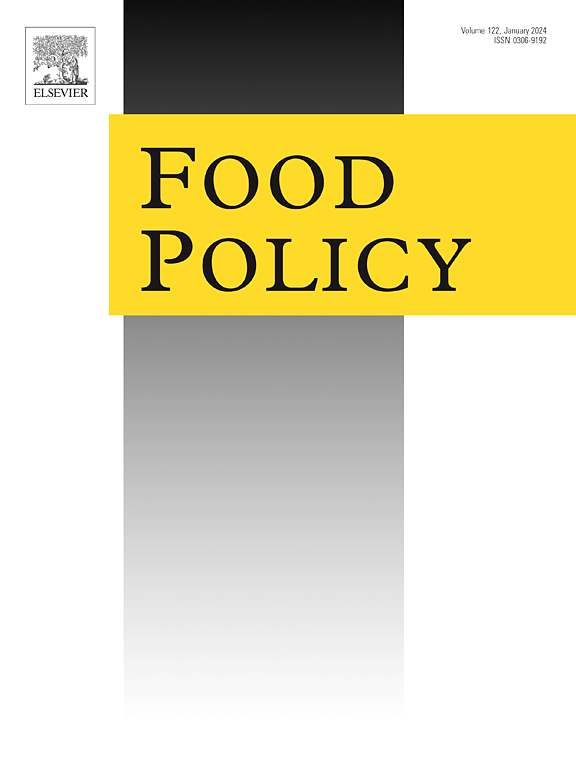Variations on the Thrifty Food Plan: Model diets that satisfy cost and nutrition constraints
IF 6.8
1区 经济学
Q1 AGRICULTURAL ECONOMICS & POLICY
引用次数: 0
Abstract
The Supplemental Nutrition Assistance Program (SNAP) supports Americans with low incomes in acquiring adequate and healthful diets. The maximum SNAP benefit is based on the Thrifty Food Plan (TFP), the lowest cost of four U.S. Department of Agriculture (USDA) food plans. This paper uses optimization models and data replicating those used to reevaluate the TFP in August 2021. The optimization models solve for a food plan that is as similar as possible to the national average diet of healthy-eating Americans, while meeting nutrition requirements and cost constraints. This study’s objective was to investigate which model components are most important in driving the results and explore economic tradeoffs between food costs, nutrition quality, and consumer preferences in the U.S. food marketplace. The results showed that model food plans differed greatly from current consumption, with only 29 of 97 food categories being selected. The TFP algorithm was driven primarily by the cost and food group constraints rather than the objective function. The constraints with the highest Lagrangian semi-elasticities were, in order: the cost constraint, a food energy constraint, a vitamin E constraint, and particular food group constraints such as dairy. The implications for recommended SNAP benefit amounts depend on which constraints are used and on how much difference between the model diet and current consumption is considered acceptable. Relaxing certain food group constraints, such as dairy constraints, for nutrition goals would permit a lower cost target, while seeking model food plans more similar to current consumption would require a higher cost target.
节俭饮食计划的变化:满足成本和营养限制的饮食模型
补充营养援助计划(SNAP)支持低收入美国人获得充足和健康的饮食。SNAP的最大福利是基于节俭食品计划(TFP),这是美国农业部(USDA)四个食品计划中成本最低的。本文使用的优化模型和数据复制了2021年8月用于重新评估TFP的模型和数据。优化模型求解的食物计划尽可能与健康饮食的美国人的全国平均饮食相似,同时满足营养要求和成本限制。本研究的目的是调查哪些模型组件在驱动结果中最重要,并探索美国食品市场中食品成本,营养质量和消费者偏好之间的经济权衡。结果显示,模型食物计划与目前的消费有很大不同,97种食物中只有29种被选择。TFP算法主要受成本和食物群约束而非目标函数驱动。拉格朗日半弹性最高的约束依次为:成本约束、食物能量约束、维生素E约束和特定食物组约束(如乳制品)。建议的SNAP益处量的含义取决于使用了哪些限制条件,以及模型饮食与当前消费之间的差异有多大被认为是可接受的。放松某些食物组的限制,如乳制品的限制,以实现营养目标,将允许一个较低的成本目标,而寻求更类似于当前消费的模型食品计划将需要一个更高的成本目标。
本文章由计算机程序翻译,如有差异,请以英文原文为准。
求助全文
约1分钟内获得全文
求助全文
来源期刊

Food Policy
管理科学-农业经济与政策
CiteScore
11.40
自引率
4.60%
发文量
128
审稿时长
62 days
期刊介绍:
Food Policy is a multidisciplinary journal publishing original research and novel evidence on issues in the formulation, implementation, and evaluation of policies for the food sector in developing, transition, and advanced economies.
Our main focus is on the economic and social aspect of food policy, and we prioritize empirical studies informing international food policy debates. Provided that articles make a clear and explicit contribution to food policy debates of international interest, we consider papers from any of the social sciences. Papers from other disciplines (e.g., law) will be considered only if they provide a key policy contribution, and are written in a style which is accessible to a social science readership.
 求助内容:
求助内容: 应助结果提醒方式:
应助结果提醒方式:


